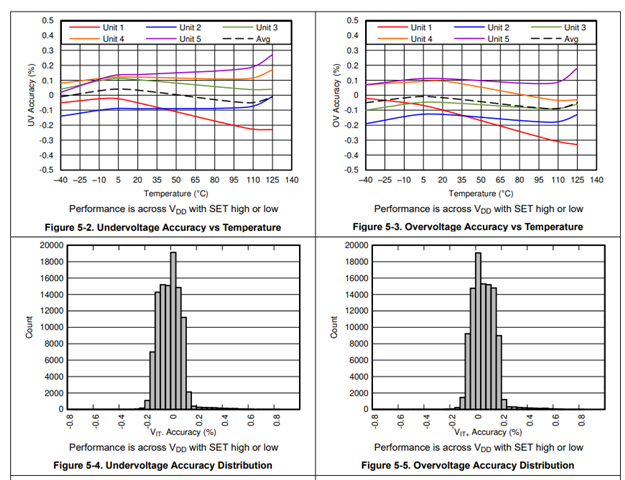Other Parts Discussed in Thread: TPS3703,
Team,
my customer wants to use the device for an aerospace application. They are currently looking at worst case scenarios.
The min/max values of V_IT+(OV) / V_IT-(UV) in the datasheet are for temp range -40°C to +125°C .
Their application is mainly working in temp range -20°C to +70°C.
Is it possible to further narrow down the limits for V_IT+(OV) / V_IT-(UV) in this tighter temp range?
Other ideas would be to reduce other parameters such as decreased stress or dependencies from supply voltage to also narrow down the limits.
FYI, I have discussed figures 5-2 and 5-3 with them, but since these are just based on example measurements, it is of limited value to them. This performance snapshot is not representative for a general statement.
Best regards


